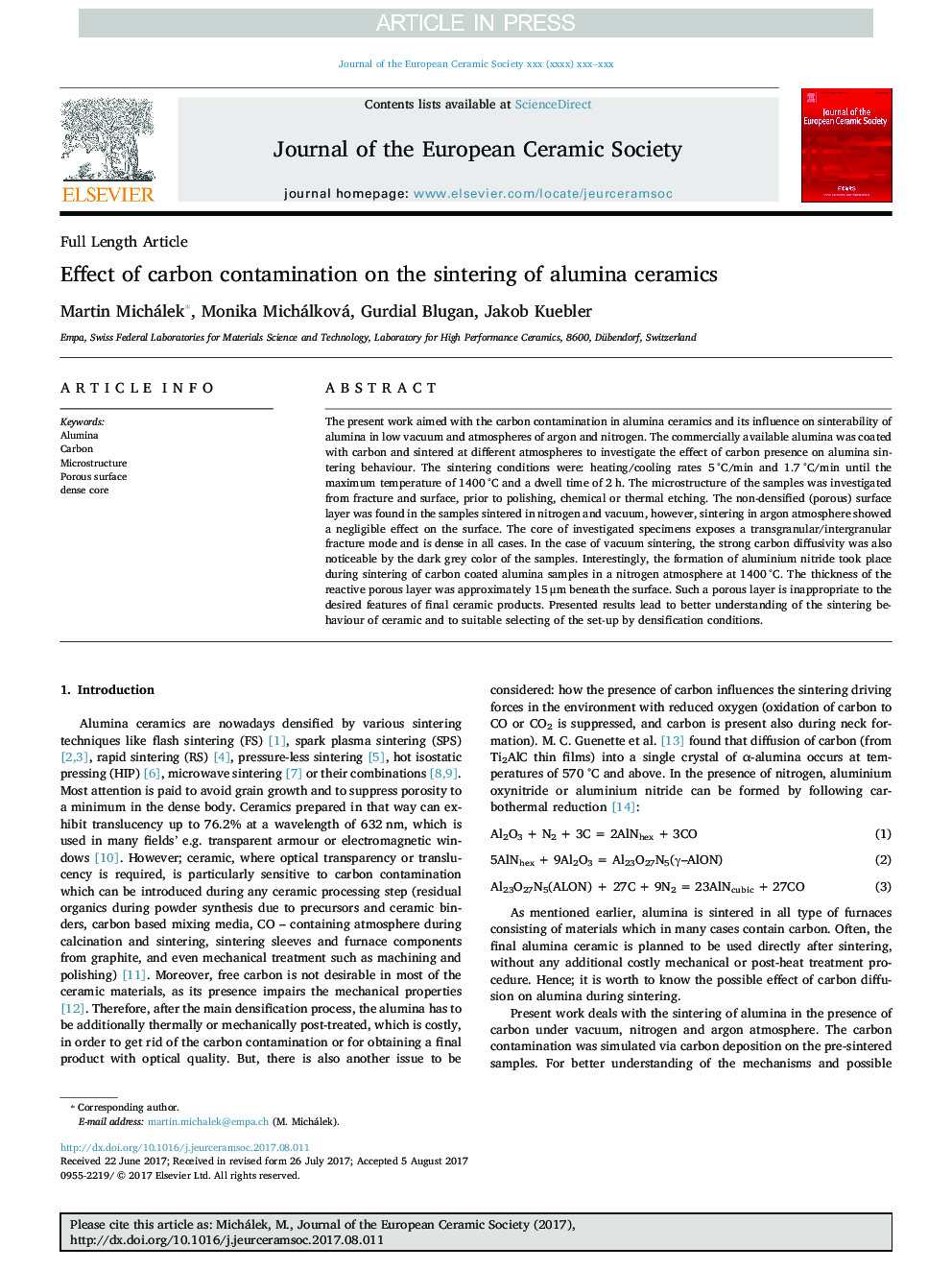| Article ID | Journal | Published Year | Pages | File Type |
|---|---|---|---|---|
| 5440235 | Journal of the European Ceramic Society | 2018 | 7 Pages |
Abstract
The present work aimed with the carbon contamination in alumina ceramics and its influence on sinterability of alumina in low vacuum and atmospheres of argon and nitrogen. The commercially available alumina was coated with carbon and sintered at different atmospheres to investigate the effect of carbon presence on alumina sintering behaviour. The sintering conditions were: heating/cooling rates 5 °C/min and 1.7 °C/min until the maximum temperature of 1400 °C and a dwell time of 2 h. The microstructure of the samples was investigated from fracture and surface, prior to polishing, chemical or thermal etching. The non-densified (porous) surface layer was found in the samples sintered in nitrogen and vacuum, however, sintering in argon atmosphere showed a negligible effect on the surface. The core of investigated specimens exposes a transgranular/intergranular fracture mode and is dense in all cases. In the case of vacuum sintering, the strong carbon diffusivity was also noticeable by the dark grey color of the samples. Interestingly, the formation of aluminium nitride took place during sintering of carbon coated alumina samples in a nitrogen atmosphere at 1400 °C. The thickness of the reactive porous layer was approximately 15 μm beneath the surface. Such a porous layer is inappropriate to the desired features of final ceramic products. Presented results lead to better understanding of the sintering behaviour of ceramic and to suitable selecting of the set-up by densification conditions.
Related Topics
Physical Sciences and Engineering
Materials Science
Ceramics and Composites
Authors
Martin Michálek, Monika Michálková, Gurdial Blugan, Jakob Kuebler,
